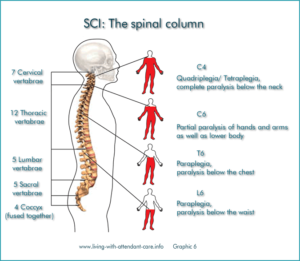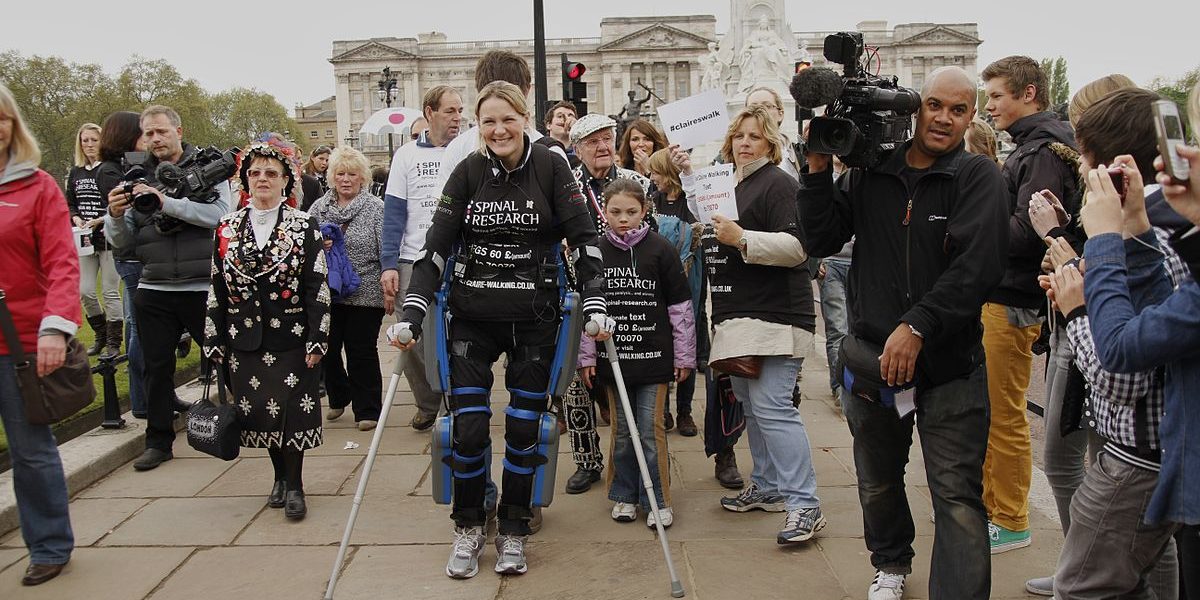A fall off of her horse in 2007 caused Claire Lomas to lose all function in her legs. In 2012, she completed the London Marathon, all 26.2 miles. Robotic exoskeletons can literally get people back on their feet shortly after a spinal cord injury occurs, but how exactly do these medical devices not only supplement but restore human performance? What does the future look like for robotic exoskeletons and those with paralysis?

There are approximately 300,000 people living with SCI in the United States, with 17,700 affected annually. So what exactly is a spinal cord injury? A spinal cord injury occurs when trauma, disease, or compression due to tumors causes damage to your spinal cord, which is responsible for your body’s motor functions (voluntary muscle movements), sensory functions (what you feel, such as temperature, pressure and pain), and autonomous functions (your heart beat, body temperature regulation, or digestion). Injuries are classified as complete or incomplete, with complete corresponding to a total loss of function or sensory feedback in areas of the body which are lower than the injury level.

Studies have shown that people with spinal cord injury, specifically individuals with paraplegia-paralysis who retain function of their upper limbs, prioritize walking as the main function they wish to regain. Robotic exoskeletons, which operate in collaboration with the user to reinforce and retrain certain functions, may be the answer to this pressing need. An exoskeleton facilitates untethered step repetitions and evenly redistributes the user’s weight to his or her core, minimizing stress on the user’s back, neck, and shoulder muscles. One study testing the exoskeleton from Ekso Bionics also showed an improvement in unassisted balance, since the device only initiates the next step if the user properly shifts his or her weight. Though primarily used for gait or mobility training in rehabilitation facilities, these devices are on their way to becoming everyday mobility aids for people with paralysis.
Rehabilitation for spinal cord injuries is long and tedious. Robotic exoskeletons enable patients to begin rehabilitation early after injury, which helps to prevent joint contracture (which is a limit in a joint’s range of motion, preserve muscle memory and strength, retain bone density, and ensure proper functioning of the digestive and respiratory systems). Humans are meant to be vertical and active, so just the act of standing reduces spasticity (perpetual muscle contraction) and pain, decreases the risk of pressure ulcers or osteoporosis from sitting or laying down for extended periods, and improves bowel and bladder functioning. Moreover, the ability to stand at eye-level and walk again reduces instances of depression.
Despite all of these benefits, current models aren’t perfect yet. The energy demand to operate the devices and consequential fatigue of the user limits long-term use, which restricts use outside of therapy. When people hear exoskeleton, images of Marvel’s Iron Man or soldiers carrying heavy packs come to mind. The advance of robotic exoskeletons may expand their use beyond rehabilitation facilities, allowing them to become integrated into everyday life.
Featured image licensed under CC BY-SA 3.0
